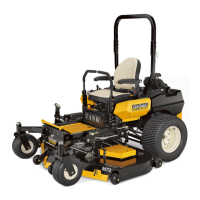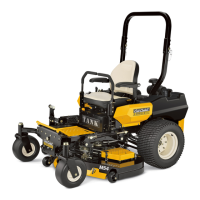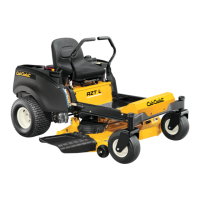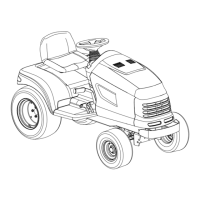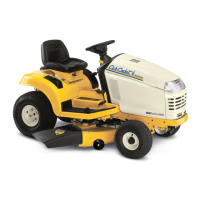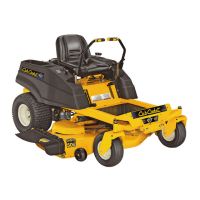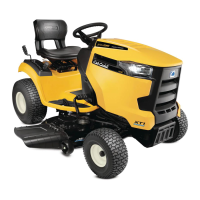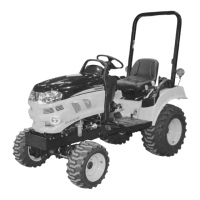Section 5 — operation 23
3. The greater the fore-to-aft distance between the two
levers, the sharper the tractor will turn.
4. To execute a “pivot turn,” move the turn side drive control
lever to the neutral position, while moving the other
control lever forward.
NOTE: Making a “pivot turn” on grass will greatly increase
the potential for defacement of the turf.
Driving the Tractor In Reverse
WARNING! Always look behind and down on both
sides of the tractor before backing up. Always look
behind while traveling in the reverse direction.
1. Slowly and evenly move both drive control levers rearward.
The tractor will start to move in the reverse direction. See
Figure 5-5.
Neutral
Position
Slower
Faster
Driving Reverse
Figure 5-5
2. As the control levers are pushed farther rearward the speed
of the tractor will increase.
3. To slow the tractor move the controls lever forward to
attain the desired speed, or move the levers to the neutral
position to stop the tractor.
Turning While Driving Rearward
To turn the tractor while driving rearward, move the control
levers as necessary so that one lever is forward of the other. The
tractor will turn in the direction of the forward control lever.
1. To turn to the left while traveling in reverse, move the left
drive control lever forward of the right lever. See Figure 5-6.
Figure 5-6
2. To turn to the right while traveling in reverse, move the right
drive control lever forward of the left lever. See Figure 5-7
Figure 5-7
3. The greater the fore-to-aft distance between the two
levers, the sharper the tractor will turn.
4. To execute a “pivot turn,” move the turn side drive control
lever to the neutral position, while moving the other
control lever rearward.
NOTE: Making a “pivot turn” on grass will greatly increase
the potential for defacement of the turf.
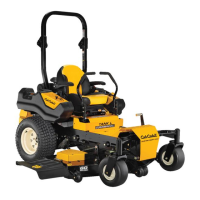
